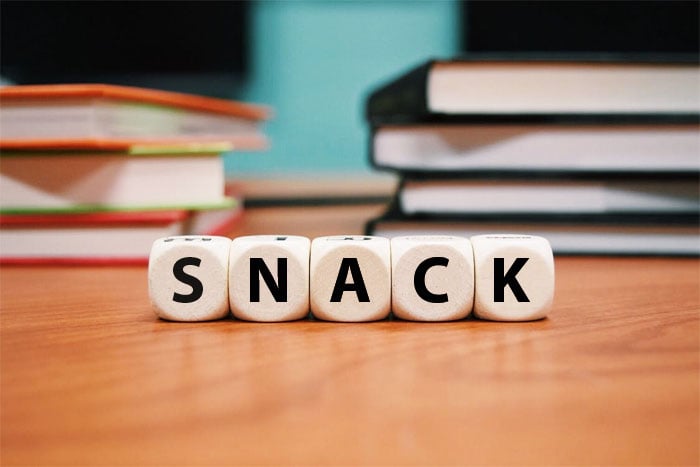
Written By: Gloria Tsang, RD
Title: Founding Registered Dietitian
Alumni: University of British Columbia
Last Updated on:

Treats packaged as 100-calorie snack packs are food manufacturers’ way of responding to the obesity epidemic and consumer demand. Cracker and cookie giants such as Oreo, Chips Ahoy, and Ritz are re-packaging their flagship products into smaller portions available in 100-calorie portion packs. And other popular packaged snacks such as Pringles, Lays chips, Cheetos, Balance energy bars, Cadbury, and even Coke are jumping on the 100-calorie bandwagon too.

Table of Contents
Over the years, although food producers have been decreasing portion sizes, just because these sancks are now packed into 100-calorie packages does not suddenly make them more nutritious or healthy. Packaged foods such as crackers, chips and cookies are great examples of empty-calorie snacks. These snacks are low in nutritional value and high in calories.
Plus, despite the fact that these 100-calorie snack packs show 0 grams of trans fat on the Nutrition Facts panels, we found trans fat laden hydrogenated oil on their ingredient list. It is unfortunate that the FDA allows food manufacturers to list 0 grams of trans fat as long as there is less than 0.5 gram of trans fat per serving.
If you absolutely cannot resist empty-calorie snacks, and you don’t mind paying a hefty price (twice as expensive per ounce), 100-calorie snack packs may work for you. Instead of eating a whole bag of fried chips, having one portion-controlled 100-calorie pack is helpful in curbing overeating. Please note that some 100-calorie packs actually have a different formulation than their original. Oreo is an example. One original Oreo cookie alone has 75 calories. It doesn’t make sense to put 1 1/2 Oreo cookies in a 100-calorie pack! So Kraft had to resize and reformulate the cookies by removing the cream layer.
A few readers asked if the new 100-calorie snack packs from Nabisco are good for kids. They felt that these single-serving cracker snacks are easy to pack in the lunchbox, making them convenient snacks for school.
Snacks packaged as 100-calorie snack packs are food manufacturers’ way of responding to the obesity epidemic. Not only are cracker and cookie giants such as Oreo, Chips Ahoy and Ritz re-packaging their flagship products into smaller portions available in 100-Calorie portion packs. Other popular packaged snacks such as Pringles, Lays chips, Cheetos, Balance energy bars and even Coke are jumping on the 100-Calorie bandwagon.
Although food manufacturers are definitely doing better by shrinking portion sizes instead of super-sizing them, repackaging these snacks into 100-Calorie packs does not make them more nutritious or healthier. These crackers and cookies are the perfect examples of empty-calorie snacks. Empty-calorie foods are high in calories but low in nutritional values, lacking the health-promoting nutrients such as vitamins, minerals, antioxidants and fiber.
In addition, despite the fact that these 100-calorie snack packs show 0 grams of trans fat on the Nutrition Facts panels, we found trans fat laden hydrogenated oil on their ingredient list. It is unfortunate that the FDA allows food manufacturers to list 0 grams of trans fat if the amounts of trans fat is less than 0.5 gram per serving.
Alumni: University of British Columbia – Gloria Tsang is the author of 6 books and the founder of HealthCastle.com, the largest online nutrition network run by registered dietitians. Her work has appeared in major national publications, and she is a regularly featured nutrition expert for media outlets across the country. The Huffington Post named her one of its Top 20 Nutrition Experts on Twitter. Gloria’s articles have appeared on various media such as Reuters, NBC & ABC affiliates, The Chicago Sun-Times, Reader’s Digest Canada, iVillage and USA Today.
healthy snacks, kid's nutrition, school, snacks
6 Snack Bars With High Protein and Fiber, Dietitian-Approved (2024 Update)